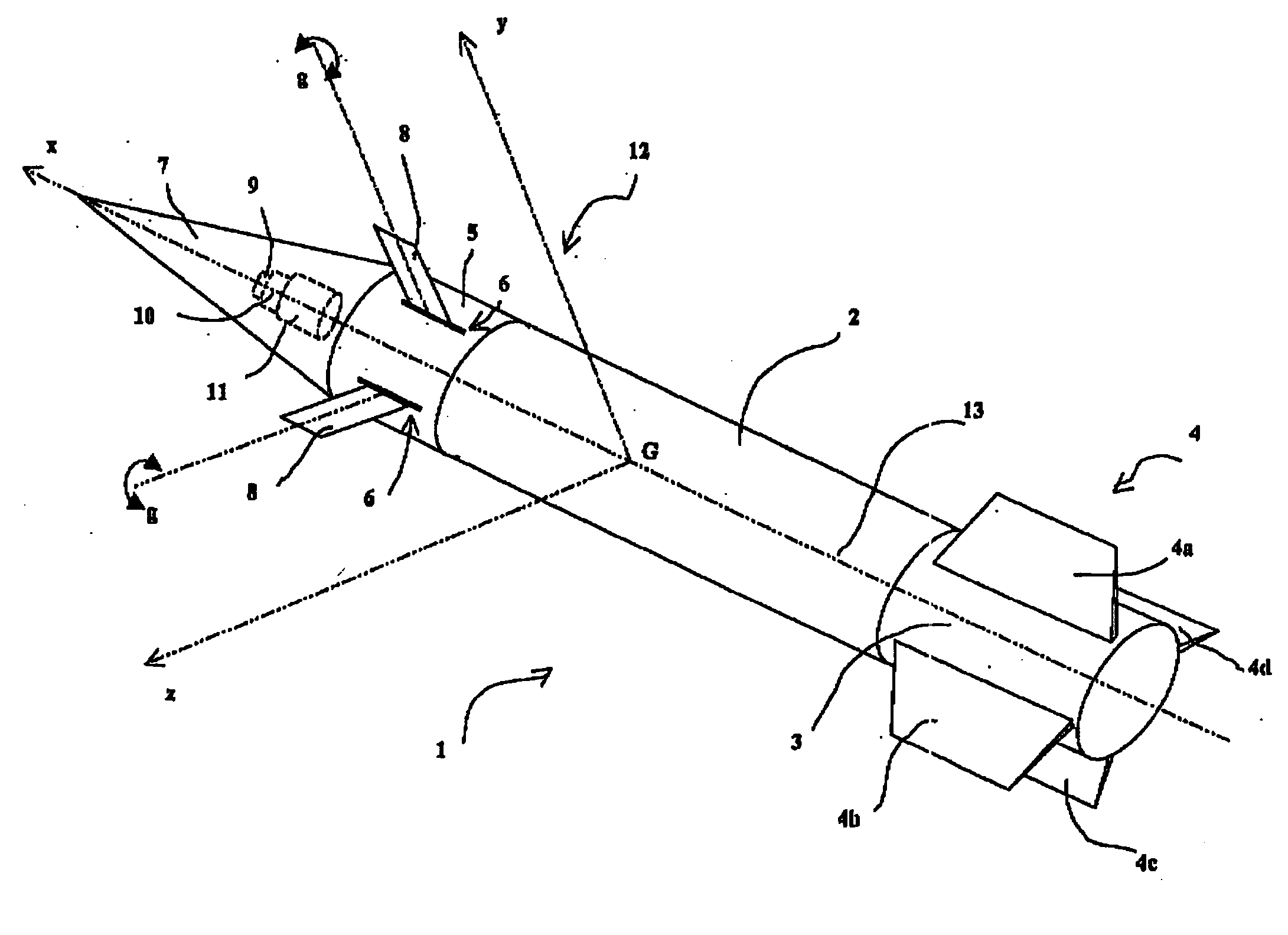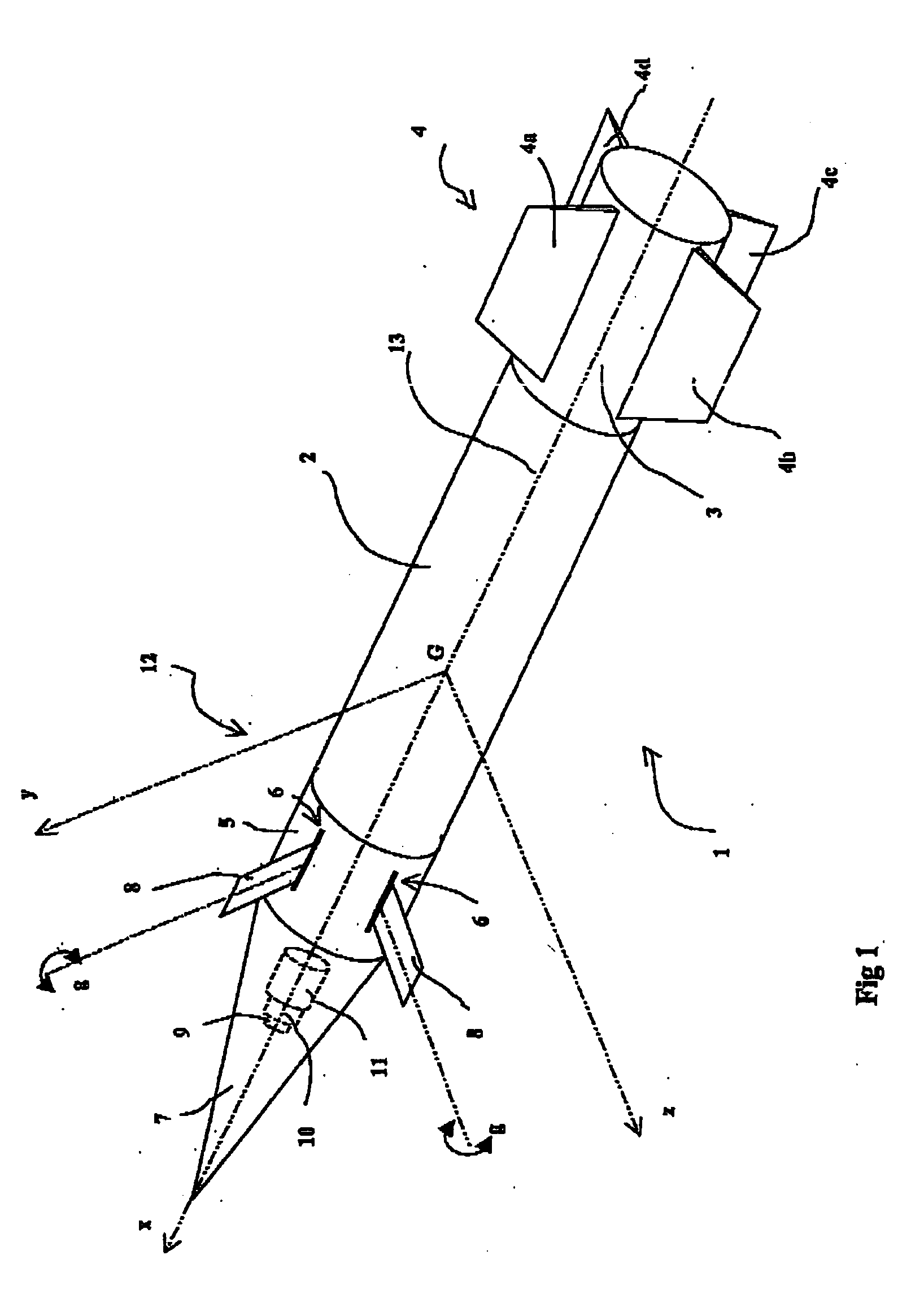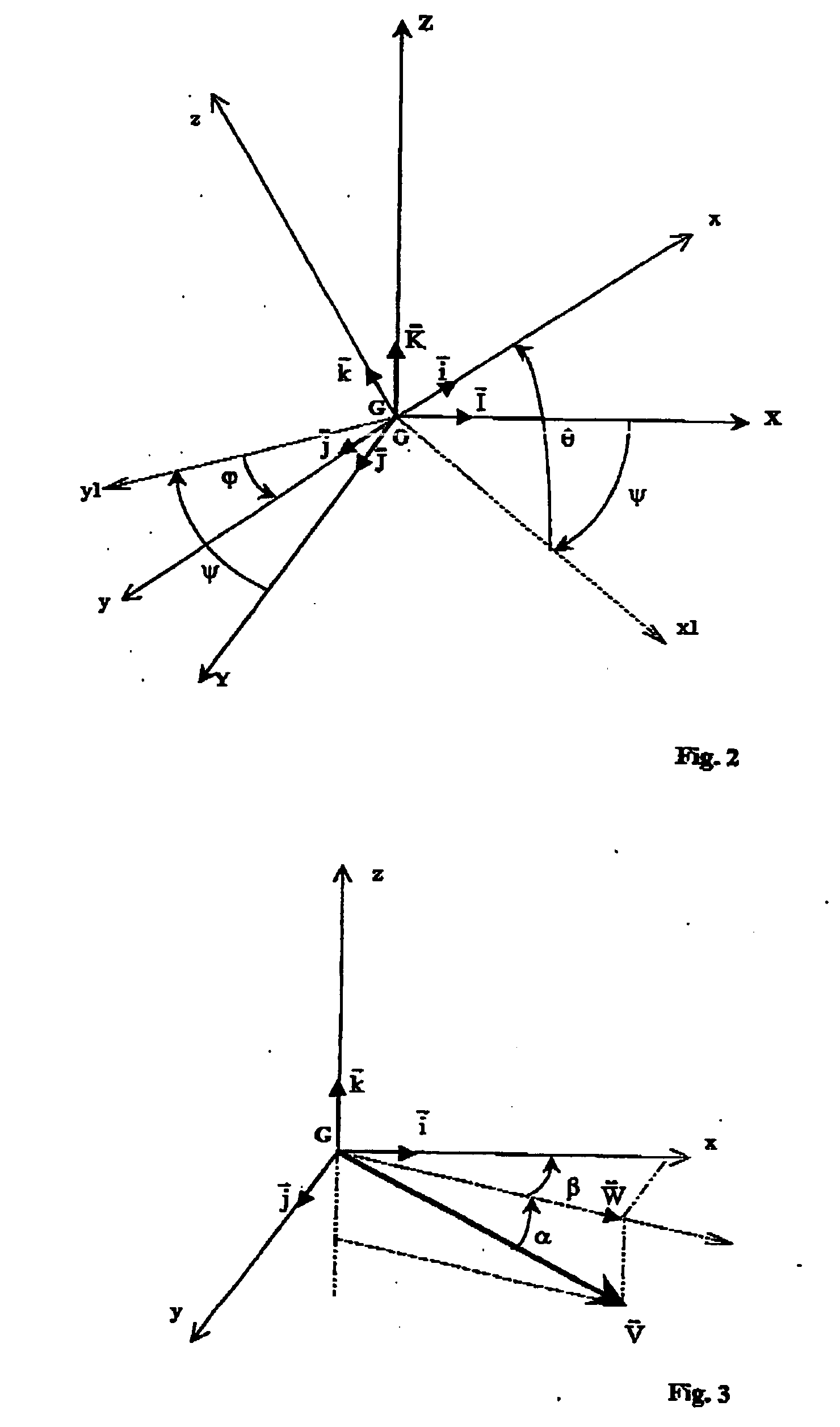Process to control the trajectory of a spinning projectile
a technology of projectile trajectory and spinning wheel, which is applied in direction controllers, navigation instruments, instruments, etc., can solve the problems of inability to use cannon-fired projectile inertial units, inability to reproduce, and inability to incorporate very accurate but costly inertial units, etc., to achieve excellent guidance accuracy, low cost, and average accuracy
- Summary
- Abstract
- Description
- Claims
- Application Information
AI Technical Summary
Benefits of technology
Problems solved by technology
Method used
Image
Examples
Embodiment Construction
[0038]FIG. 1 shows a gliding artillery projectile 1 that incorporates a body 2 inside which a useful charge is housed (not shown), for example an explosive load or sub-munitions.
[0039] The body 2 terminates with a rear portion 3 which may enclose a propellant or else pyrotechnic generator allowing the base drag to be reduced (such generators are better known under the term, base bleed).
[0040] The rear portion 3 is fitted with a cross-shaped boattail 4 formed of four fixed fins 4a, 4b, 4c, 4d. These fins will be made, for example, as sheet steel wound around the projectile body and will deploy upon exiting the gun barrel under the effect of their own elasticity (see namely patent DE4025515).
[0041] The body 2, at its front part, has a piloting device 5 that comprises four cross-shaped canard elevons 8 deployed through slots 6 made in the projectile body. Here, only two elevons can be seen. The elevons are associated in pairs, each pair of elevons representing a piloting plane (pitc...
PUM
 Login to View More
Login to View More Abstract
Description
Claims
Application Information
 Login to View More
Login to View More - R&D
- Intellectual Property
- Life Sciences
- Materials
- Tech Scout
- Unparalleled Data Quality
- Higher Quality Content
- 60% Fewer Hallucinations
Browse by: Latest US Patents, China's latest patents, Technical Efficacy Thesaurus, Application Domain, Technology Topic, Popular Technical Reports.
© 2025 PatSnap. All rights reserved.Legal|Privacy policy|Modern Slavery Act Transparency Statement|Sitemap|About US| Contact US: help@patsnap.com



